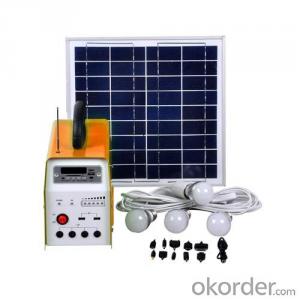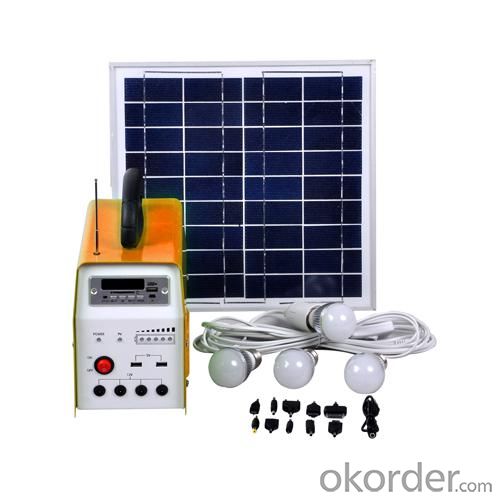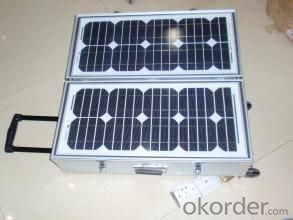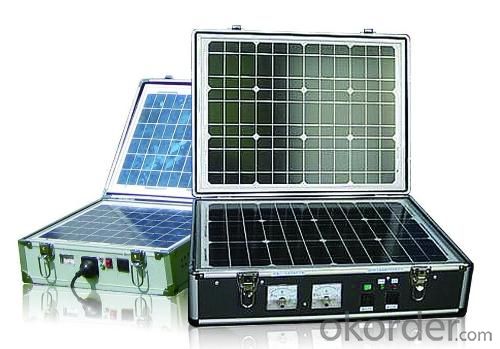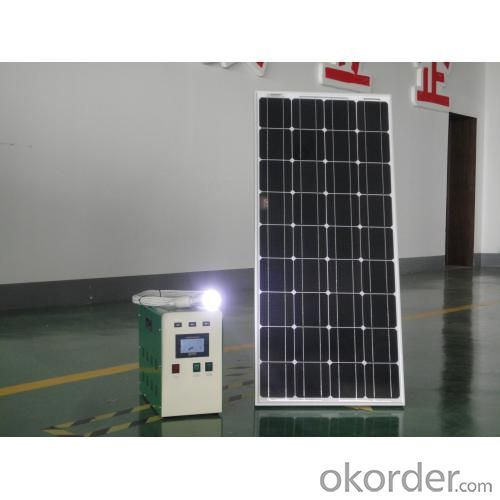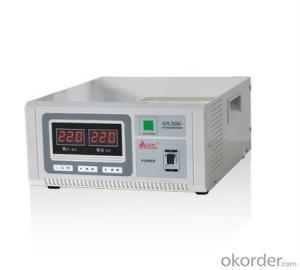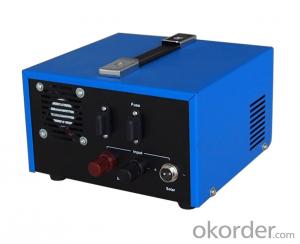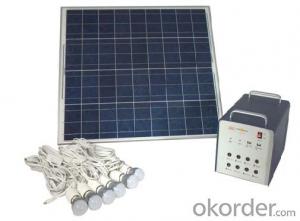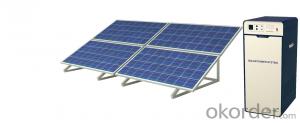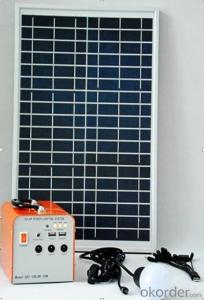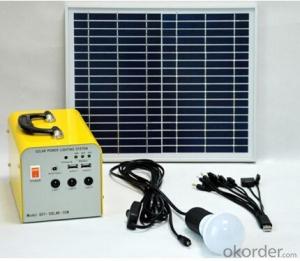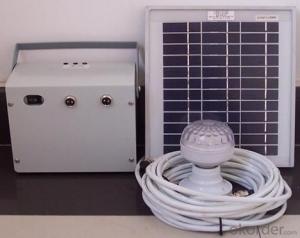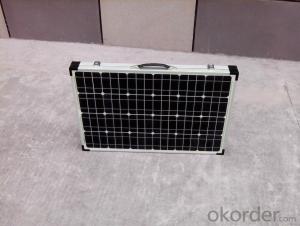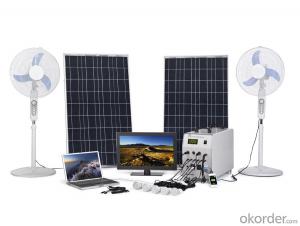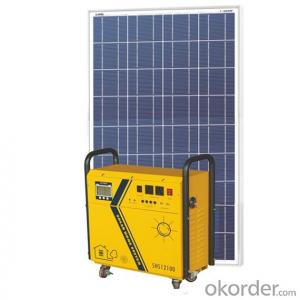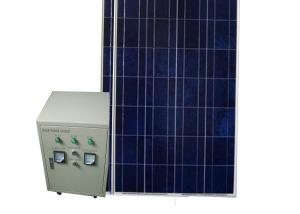Solar Energy Systems 772 - An-S100W Portable Solar System
- Loading Port:
- Shanghai
- Payment Terms:
- TT OR LC
- Min Order Qty:
- 0 set
- Supply Capability:
- 10000 set/month
OKorder Service Pledge
OKorder Financial Service
You Might Also Like
Specification
Description of Solar Portable System AN-S100W
Compatible portable solar power supply, also called solar mobile power, it includes: solar panel, charge controller, discharge controller, electric charge controller, inverter, outside enlarge capacity interface and battery, etc. Photovoltaic portable power supply can work in solar energy and ordinary power two modes, and can automatically switch. Photovoltaic portable power supply is used widely is the emergency relief, tourism, army, geological prospecting, archaeology, schools, hospitals, Banks, gas stations, comprehensive building, highway, substation, family camping or outdoor activities such as emergency power ideal power supply equipment.
Specifications of Solar Portable System AN-S100W
1. Solar Panel: 100W 18V
2. Battery: 12V60AH lead-acid battery
Input terminal: 1 DC input, 14.8V; 2 solar input terminal (+,-), 18V.
Output terminal: 8 output terminals, including:
1x USB output, 5V 1A;
5x DC outputs, 12V 1A;
2xAC220V outputs
Switch: 2pcs; left one for DC12V, right one for AC220V
Indication lamp: 2 pcs; Red one is for charging indication, Green one is for operating indication.
Accessories of Solar Portable System AN-S100W
1. 2pcs 3W led bulbs;
2. 1pc 5m connection wire between solar panel and cabinet;
3. 2pcs lamp holder with 3m wire;
4. 1pc AC charger
Technical Data of Solar Portable System AN-S100W
| Internal Package Size (cm) | 63*47*57 (panel extra) |
| Packing QTY | 1 |
| External Package Size (cm) | 63*47*57 (panel extra) |
IMages of Solar Portable System AN-S100W
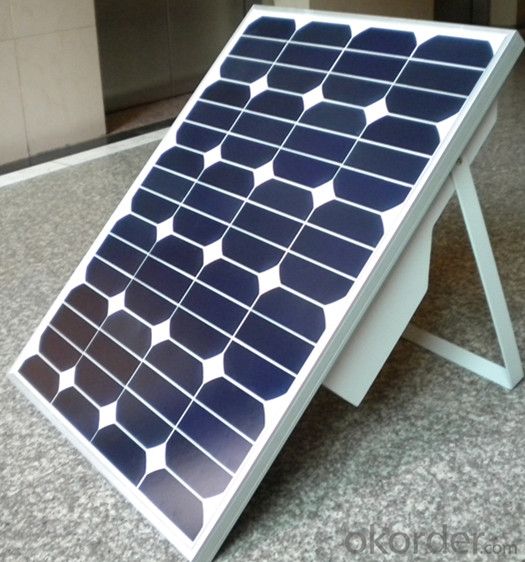
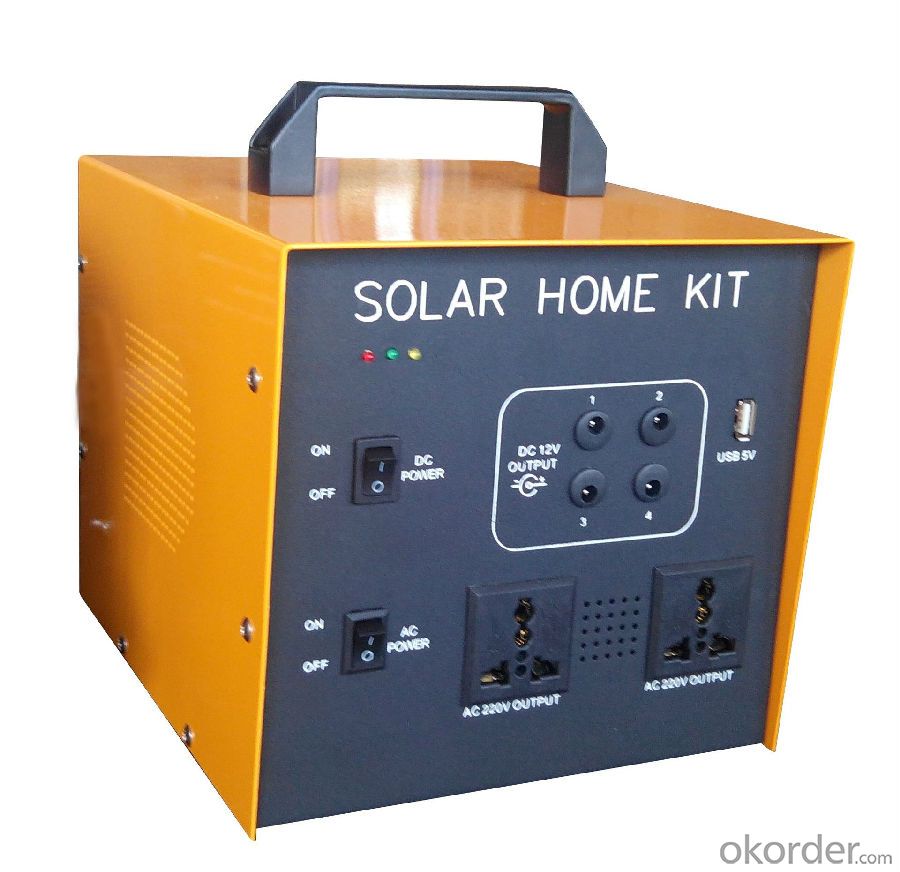
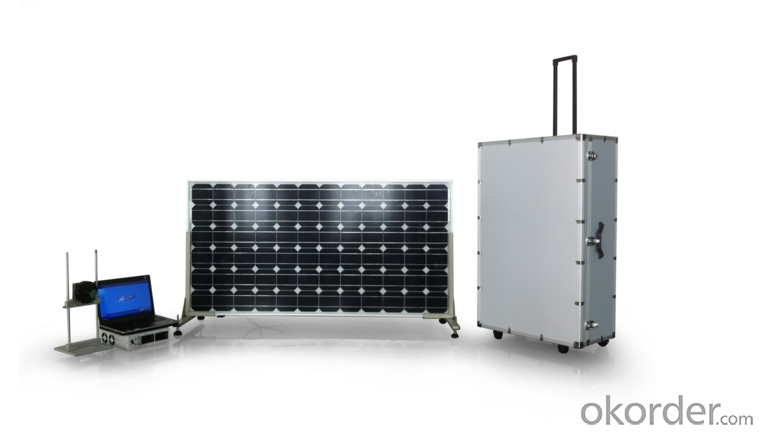
FAQ:
1. How long will my inquiry get response?
Your inquiry related to our products or prices will be replied within 24 hours.
2. Can I get professional service and suggestion?
Well-trained and experienced staffs to answer all your questions in fluent English.
3. Do you accept OEM or customized design?
OEM & ODM, any your customized lightings we can help you to design and put into product.
4. What if I need specific design?
Distributorship are offered for your unique design and some our current models.
- Q: How does a PV system convert sunlight into electricity?
- A PV system, also known as a solar panel system, converts sunlight into electricity through the use of photovoltaic cells. These cells are made of semiconducting materials, typically silicon, which have the ability to convert sunlight directly into electricity. When sunlight hits the surface of the PV cells, it excites the electrons within the material, causing them to flow, creating an electric current. This current is then captured and harnessed by the system, allowing it to be used as electricity for various purposes.
- Q: Can solar energy systems be installed on sloped surfaces?
- Yes, solar energy systems can be installed on sloped surfaces. In fact, sloped surfaces can sometimes be advantageous for solar panel installation as they can enhance the exposure to sunlight and increase the efficiency of the system.
- Q: Can solar energy systems be installed on commercial buildings?
- Yes, solar energy systems can definitely be installed on commercial buildings. In fact, many businesses are increasingly adopting solar power to meet their energy needs and reduce their carbon footprint. These systems can be customized to suit the specific requirements and available space of each commercial building, making it a viable and sustainable option for businesses to generate clean and renewable energy.
- Q: What is the impact of roof orientation on the performance of solar panels?
- The impact of roof orientation on the performance of solar panels is significant. The orientation of the roof determines the amount of sunlight that the panels receive throughout the day. Ideally, solar panels should be installed on roofs that face south in the northern hemisphere and north in the southern hemisphere for maximum exposure to sunlight. East and west-facing roofs can still generate electricity, but their output may be lower. Additionally, the tilt angle of the roof can also affect the performance of solar panels. By optimizing roof orientation and tilt, the efficiency and productivity of solar panels can be greatly enhanced.
- Q: How do solar energy systems impact the quality of indoor air?
- Solar energy systems have a positive impact on indoor air quality. Unlike traditional energy sources, solar power does not release harmful pollutants or greenhouse gases, resulting in cleaner and healthier indoor air. This benefits individuals by reducing the risk of respiratory issues and promoting overall well-being.
- Q: Can a solar energy system be installed on a ground mount?
- Yes, a solar energy system can be installed on a ground mount. Ground-mounted solar systems are a popular choice for homeowners or businesses who have ample space on their property. By installing solar panels on a ground mount, they can be positioned at the optimal angle for capturing sunlight, maximizing energy production. Ground mounts also offer flexibility in terms of system size and orientation, making them suitable for various locations and terrains.
- Q: Can solar energy systems be installed in areas with high wind speeds?
- Yes, solar energy systems can be installed in areas with high wind speeds. However, it is important to consider the potential impact of strong winds on the structural stability of the solar panels and mounting systems. Proper engineering and installation techniques can ensure that solar energy systems can withstand high wind speeds and continue to operate efficiently.
- Q: How do solar energy systems perform in different weather conditions?
- Solar energy systems can still generate electricity even in cloudy or overcast weather conditions, although their performance may be reduced. However, they are most efficient and productive in sunny weather with direct sunlight. Rain, snow, or extreme weather events may affect their performance temporarily, but solar panels are designed to withstand such conditions and continue to operate effectively.
- Q: Can solar energy systems be used for powering construction or building sites?
- Yes, solar energy systems can certainly be used for powering construction or building sites. In fact, they offer numerous advantages over traditional power sources. Solar panels can be installed on rooftops or other available areas of the site to capture sunlight and convert it into electricity. This renewable energy can be used to power various equipment and tools required for construction, including lighting systems, power tools, and machinery. Using solar energy systems on construction sites can lead to significant cost savings. With no fuel costs and minimal maintenance requirements, solar power can help reduce the overall energy expenses associated with construction projects. Additionally, solar panels have a long lifespan and can be reused in future projects, making them a worthwhile investment. Furthermore, solar energy systems are environmentally friendly and produce zero greenhouse gas emissions during operation. By utilizing solar power, construction sites can reduce their carbon footprint and contribute to a greener and more sustainable future. This aligns with the increasing focus on sustainable construction practices and helps meet environmental regulations and certifications. It's worth noting that solar energy systems can also be combined with other renewable technologies, such as battery storage systems, to ensure a continuous power supply even during cloudy days or at night. This enables construction sites to have a reliable and uninterrupted power source, reducing dependence on traditional energy grids. In conclusion, solar energy systems are a viable and efficient option for powering construction or building sites. They offer cost savings, environmental benefits, and the ability to operate independently of the grid. As the construction industry continues to prioritize sustainability, the adoption of solar power is likely to become more widespread in the future.
- Q: Are there any risks of electrical overloading with solar energy systems?
- Yes, there are some risks of electrical overloading with solar energy systems. One of the main factors that can lead to overloading is the mismatch between the capacity of the solar panels and the electrical load. If the solar panels generate more electricity than what is being consumed or stored, it can cause an overload in the system. Another risk is that solar energy systems often require inverters to convert the DC power generated by the panels into AC power that can be used in homes or businesses. Inverters have a capacity limit, and if the solar panels produce more electricity than the inverter can handle, it can cause overloading. Additionally, issues with wiring or connection can also lead to overloading. If the wiring is not properly sized or the connections are loose or faulty, it can increase the resistance and cause overheating, which can eventually lead to overloading. To mitigate these risks, it is important to properly size the solar energy system to match the electrical load. This involves considering factors such as the average energy consumption, peak energy demand, and the capacity of the inverter. It is also crucial to ensure that the wiring and connections are done by certified professionals and are regularly inspected for any signs of wear or damage. Moreover, safety mechanisms such as circuit breakers and surge protectors should be installed to prevent overloading and protect the solar energy system from any potential damage. Regular maintenance and monitoring of the system can also help identify any issues early on and prevent overloading.
Send your message to us
Solar Energy Systems 772 - An-S100W Portable Solar System
- Loading Port:
- Shanghai
- Payment Terms:
- TT OR LC
- Min Order Qty:
- 0 set
- Supply Capability:
- 10000 set/month
OKorder Service Pledge
OKorder Financial Service
Similar products
Hot products
Hot Searches
Related keywords
